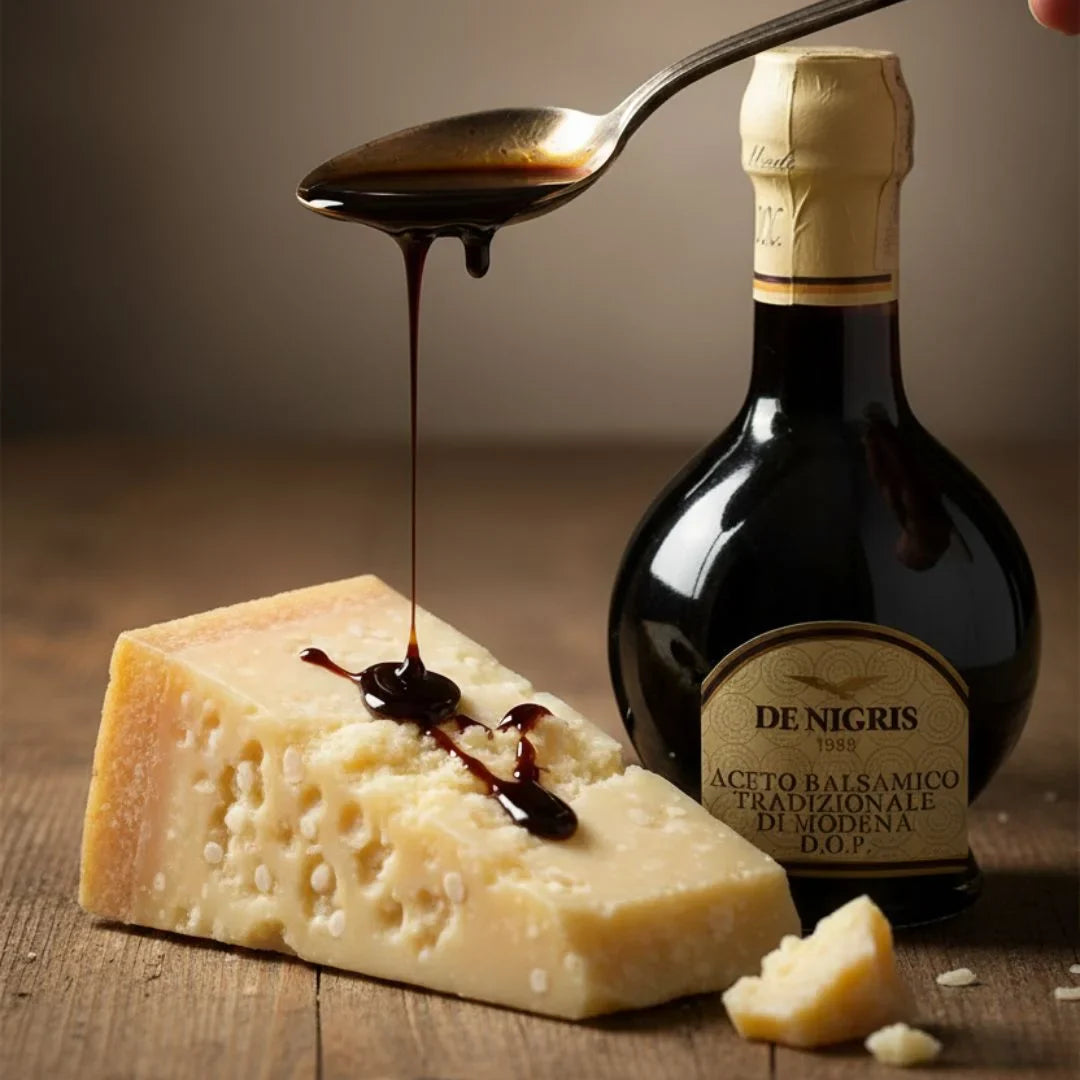
The Secrets Behind Modena Balsamic Vinegar
Dark, glossy, and bursting with complex flavor - balsamic vinegar from Modena is one of Italy’s most treasured culinary exports. Yet, not all balsamic vinegars are created equal. Some bottles cost just a few dollars at the grocery store, while others can sell for hundreds. So what’s the difference?
The answer lies in how balsamic vinegar is made, how long it’s aged, and whether it’s produced under strict European certifications. In this guide, we’ll uncover the secrets behind traditional vs. commercial balsamic vinegar, explain aging methods, and help you choose the right one for your kitchen.
1. The Origins of Balsamic Vinegar
Balsamic vinegar traces its roots back nearly 1,000 years to Modena and Reggio Emilia in northern Italy. Originally considered a luxury item and even used as a medicinal tonic, balsamic became a culinary staple during the Renaissance. Today, only products made in this region under strict rules can be called Aceto Balsamico Tradizionale di Modena PDO.
2. Traditional Balsamic Vinegar (PDO)
This is the gold standard of balsamic vinegar, recognized by the Protected Designation of Origin (PDO) label.
How It’s Made:
-
Produced only from grape must (freshly pressed juice with skins, seeds, and stems) of local Trebbiano or Lambrusco grapes.
-
Slowly cooked down to a syrup and aged in a series of wooden barrels for 12–25+ years.
-
Bottled in distinctive bulb-shaped bottles (100 ml) approved by the Consorzio.
Flavor Profile:
-
Thick, syrupy texture
-
Balanced sweetness and acidity
-
Complex layers of flavor - figs, raisins, wood, caramel, and spice
How to Use:
-
Drizzle over Parmigiano Reggiano or fresh strawberries
-
Add a few drops to risotto or grilled meats
-
Enjoy sparingly - a little goes a long way
3. Balsamic Vinegar of Modena (PGI)
The most common balsamic you’ll find in stores is Aceto Balsamico di Modena PGI (Protected Geographical Indication).
How It’s Made:
-
Blend of grape must and wine vinegar
-
Aged for a shorter time (often a few months to 3 years) in barrels
-
May include caramel coloring to achieve the dark hue
Flavor Profile:
-
Thinner consistency than traditional
-
Sweet-tart with less complexity
-
Affordable and versatile for everyday cooking
How to Use:
-
Perfect for salad dressings and marinades
-
Drizzle over roasted vegetables
-
Mix into glazes and pan sauces
4. Commercial-Grade Balsamic Vinegar
At the lowest tier are mass-produced balsamic vinegars with little connection to Modena.
How It’s Made:
-
Often just wine vinegar mixed with sweeteners, colorants, and artificial thickeners
-
No significant aging process
-
Inexpensive, but lacks depth of flavor
Flavor Profile:
-
Sharp acidity
-
One-dimensional sweetness
-
Best reserved for bulk cooking when subtlety isn’t needed
5. Aging: The Key to Flavor
The aging process is what sets true balsamic apart.
-
Traditional PDO: Aged minimum 12 years, some up to 25–50 years. Each year, vinegar is moved through barrels of different woods (cherry, chestnut, oak, mulberry), absorbing new flavors.
-
PGI Balsamic: Aged briefly - from a few months to a couple of years.
-
Commercial: Usually no meaningful aging.
The longer the aging, the thicker and richer the balsamic becomes.
6. How to Spot Authentic Balsamic
Look for these clues when shopping:
-
PDO Seal (Red/Gold): Guarantees traditional balsamic, sold only in 100 ml bottles.
-
PGI Seal (Yellow/Blue): Indicates balsamic from Modena with at least partial authenticity.
-
Ingredient List: Authentic balsamic will list cooked grape must as the first ingredient.
-
Price: Quality balsamic comes at a premium - true PDO vinegar will never be cheap.
7. Which Balsamic Should You Buy?
-
Everyday Use: PGI balsamic is affordable and versatile for salads, marinades, and sauces.
-
Special Occasions: PDO traditional balsamic is best enjoyed as a finishing touch.
-
Budget-Friendly: Commercial balsamic works for recipes where subtlety isn’t required.
At Pick and Get, we recommend trusted producers like De Nigris (one of Italy’s most respected balsamic makers) to ensure you get authentic flavor.
Conclusion
Balsamic vinegar is more than just a condiment - it’s a symbol of Italian craftsmanship and culinary tradition. Whether you choose affordable PGI balsamic for everyday cooking or indulge in PDO traditional balsamic for gourmet occasions, adding a bottle to your pantry guarantees flavor that elevates even the simplest dishes.
Explore Pick and Get’s collection of authentic balsamic vinegars from Modena, including De Nigris, and experience the difference true craftsmanship makes.








